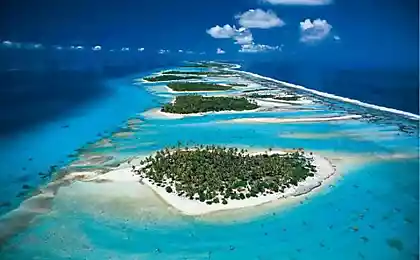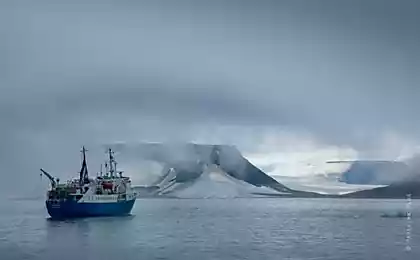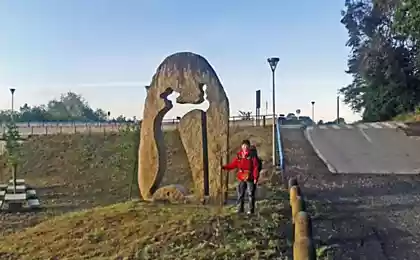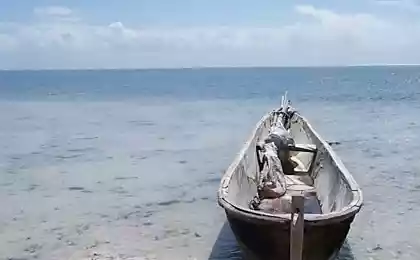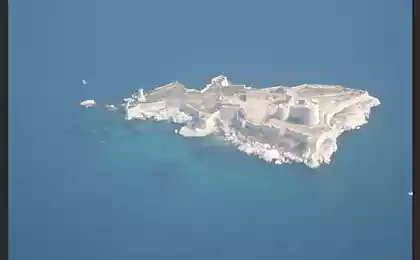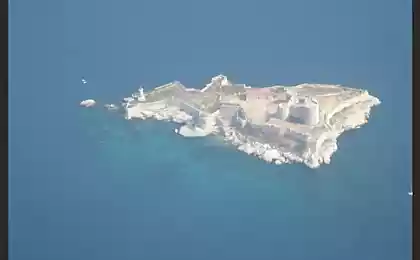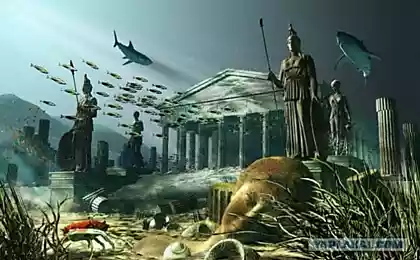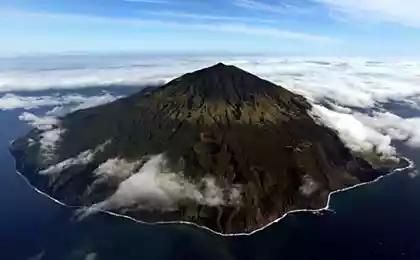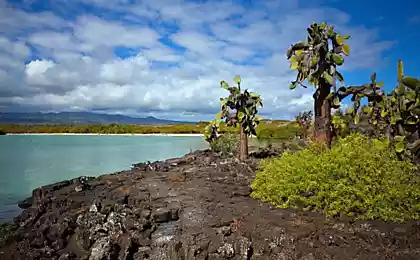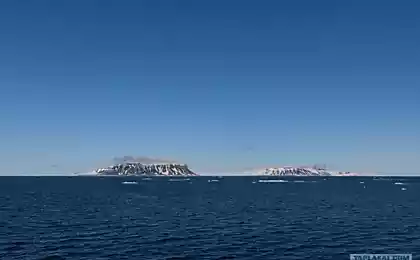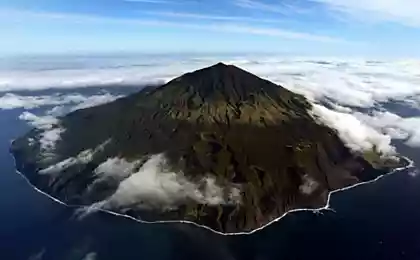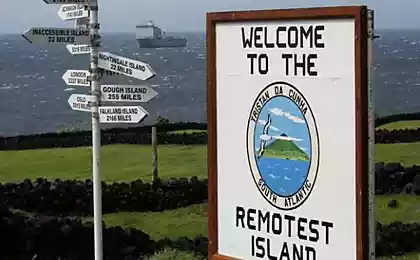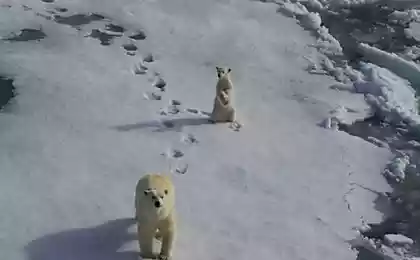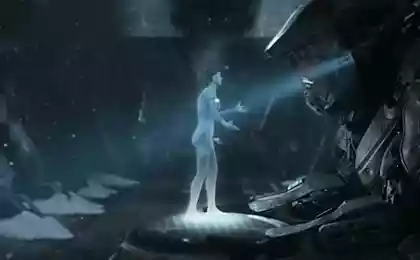610
Long Way archipelago.
7 Photos + text
It's no secret that the current distribution of the continents - only a momentary snapshot in the history of our planet. Since the inception of the Earth 4, 5 billion years ago to the present day drift of tectonic plates determines the evolution and development of the planet. Without changes in the global Earth would be a lifeless desert. Travel not only people. And Spitsbergen - a clear confirmation. This small piece of land was 12,000 kilometers over the past 600 million years, from the south pole to the north.
Interesting? Let's follow his path together. So, at the beginning of the story: 600 million years ago Spitsbergen was covered with ice Vendian on 60th latitude South. Terrestrial life did not exist. Shoal seas inhabited vendobionty - soft-bodied creatures - the first of the famous and widespread of multicellular animals. Now it is known to thousands of copies of various representatives of the fauna, but neither one of them is no damage or bites; apparently, while there were no predators, and indeed the animals that feed on large pieces of food. Therefore Vendian biota often called the "Garden Ediacaria" - similar to the Garden of Eden, where no one is eating. The situation is the Garden of Eden, as it should, was short-lived: in the late Vendian vendobionty completely died out, leaving no direct descendants.

With the Cambrian of Silurian (530-430mln. Years ago) Svalbard moved to the equator, occasionally covered with water, tropical seas. On Earth, a revolution going on skeletal and appear almost all types of animals. The plants are located on the land, in the seas appear ancient vertebrates. In the waters of Svalbard reign corals and trilobites.
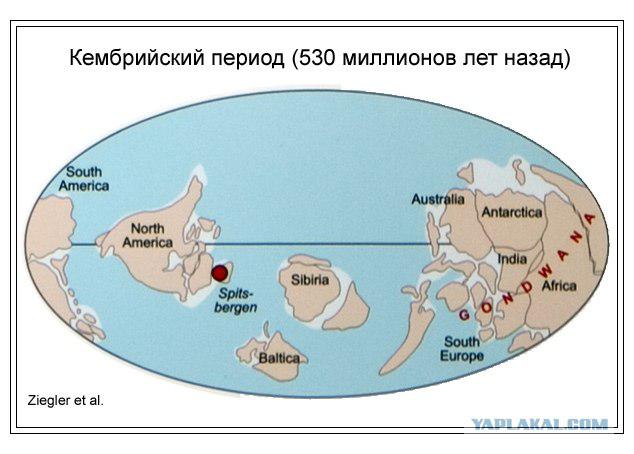
Devonian period (390 million. Years ago) - Svalbard is located at 25 degrees north latitude. On Earth, the era of the desert. There are the first spiders, insects and ammonites. By the end of the period of mass extinctions occur.
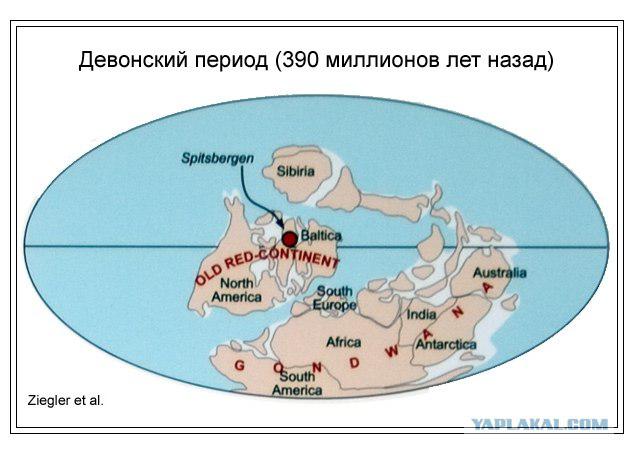
Carboniferous period finds an archipelago in the 30th parallel of north latitude. Climate - as now in the Caribbean. There were reptiles, and on Svalbard is increasing rain rainforest. The Permian island again go under the water, and the world begins the great Permian-Triassic extinction. In the Triassic and Jurassic dinosaurs appear ancient. Svalbard is covered by the cold waters of the coastal seas, continuing to move north
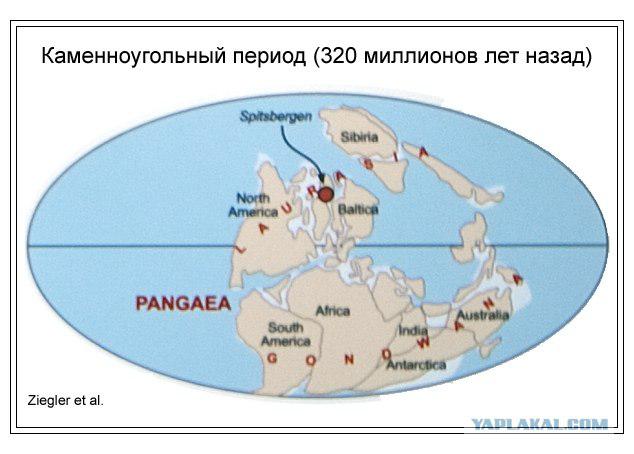
Cretaceous period. Svalbard again over the water and reached 60 degrees north latitude. On Earth, the climate is humid and forests grow right up to the pole. There were flowering plants.
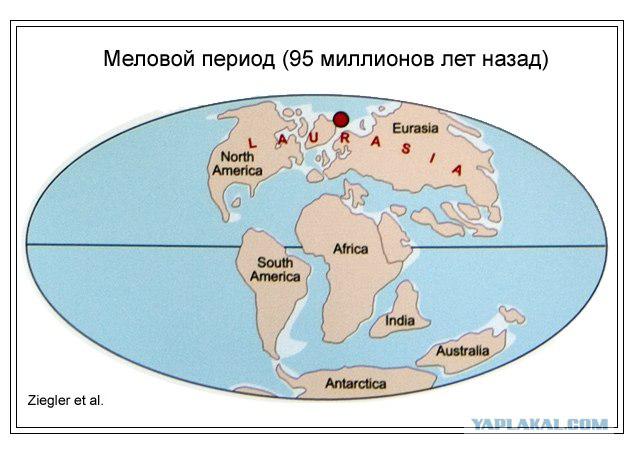
Tertiary period. Archipelago climbed as much as the 83rd parallel, but still covered with forest views similar to our taiga. Climate change and mass extinction occurs again.
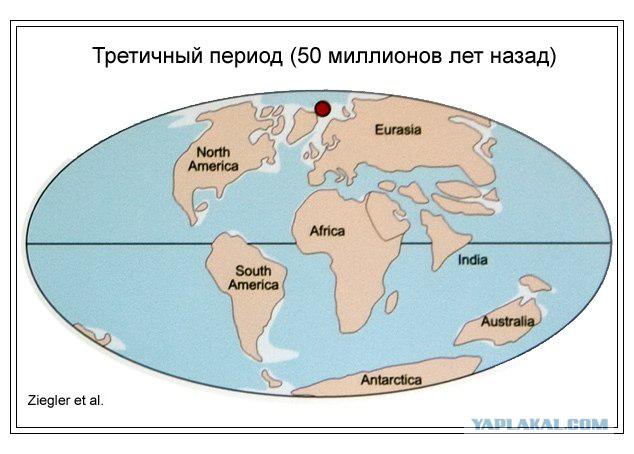
via
Quaternary period - the present time. Svalbard bit down south - the 79y parallel of north latitude. There was a man. Again, it's icing.
Fossils - traces of bygone eras - are ubiquitous in Svalbard.
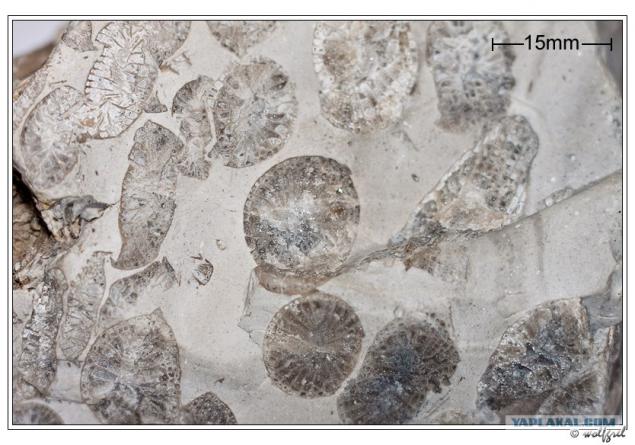
Source:
It's no secret that the current distribution of the continents - only a momentary snapshot in the history of our planet. Since the inception of the Earth 4, 5 billion years ago to the present day drift of tectonic plates determines the evolution and development of the planet. Without changes in the global Earth would be a lifeless desert. Travel not only people. And Spitsbergen - a clear confirmation. This small piece of land was 12,000 kilometers over the past 600 million years, from the south pole to the north.
Interesting? Let's follow his path together. So, at the beginning of the story: 600 million years ago Spitsbergen was covered with ice Vendian on 60th latitude South. Terrestrial life did not exist. Shoal seas inhabited vendobionty - soft-bodied creatures - the first of the famous and widespread of multicellular animals. Now it is known to thousands of copies of various representatives of the fauna, but neither one of them is no damage or bites; apparently, while there were no predators, and indeed the animals that feed on large pieces of food. Therefore Vendian biota often called the "Garden Ediacaria" - similar to the Garden of Eden, where no one is eating. The situation is the Garden of Eden, as it should, was short-lived: in the late Vendian vendobionty completely died out, leaving no direct descendants.

With the Cambrian of Silurian (530-430mln. Years ago) Svalbard moved to the equator, occasionally covered with water, tropical seas. On Earth, a revolution going on skeletal and appear almost all types of animals. The plants are located on the land, in the seas appear ancient vertebrates. In the waters of Svalbard reign corals and trilobites.

Devonian period (390 million. Years ago) - Svalbard is located at 25 degrees north latitude. On Earth, the era of the desert. There are the first spiders, insects and ammonites. By the end of the period of mass extinctions occur.

Carboniferous period finds an archipelago in the 30th parallel of north latitude. Climate - as now in the Caribbean. There were reptiles, and on Svalbard is increasing rain rainforest. The Permian island again go under the water, and the world begins the great Permian-Triassic extinction. In the Triassic and Jurassic dinosaurs appear ancient. Svalbard is covered by the cold waters of the coastal seas, continuing to move north

Cretaceous period. Svalbard again over the water and reached 60 degrees north latitude. On Earth, the climate is humid and forests grow right up to the pole. There were flowering plants.

Tertiary period. Archipelago climbed as much as the 83rd parallel, but still covered with forest views similar to our taiga. Climate change and mass extinction occurs again.

via
Quaternary period - the present time. Svalbard bit down south - the 79y parallel of north latitude. There was a man. Again, it's icing.
Fossils - traces of bygone eras - are ubiquitous in Svalbard.

Source:
